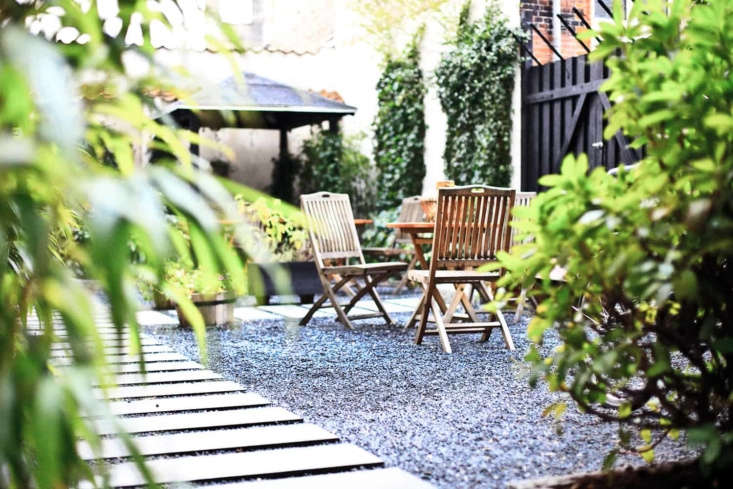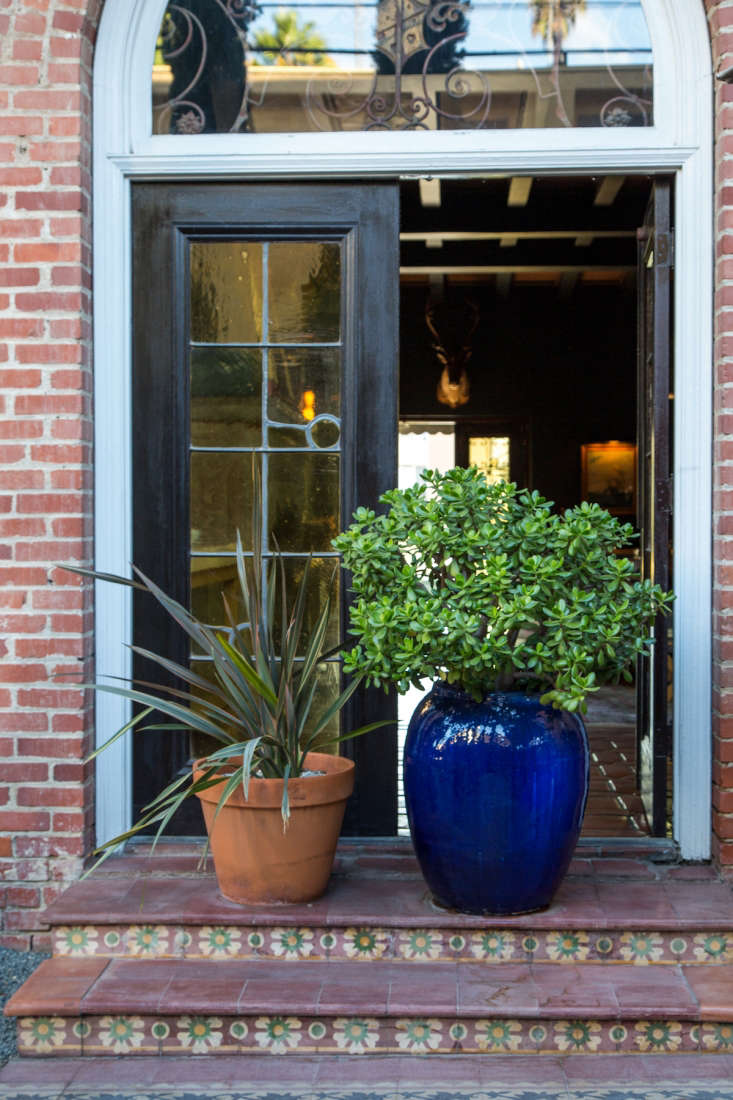An outdoor patio can change your outlook on life. Picture yourself sprawled in a comfortable chair, a glass of lemonade on a side table, a book. The sun is warm. Close your eyes: that tweeting sound you hear is coming from birds in your garden.
If the only obstacle that stands between you and this miracle is the fact that you currently don’t have a patio, that’s an easy problem to fix. Even on tight budget, or with a very small outdoor space, you can create a new outdoor living room. The average cost of installing a patio to vary widely depending on a patio’s size and materials, from $800 for a 7-foot-square concrete slab to $10,000 for a luxe 16-by-18-foot terrace paved with stone, according to Home Advisor.
Here are 10 ways to save money when you design and build a new patio:
1. Pick a level location.

Remember: it’s more expensive is if you have to build retaining walls or grade the soil to make a flat spot. If you can’t avoid a slope, stabilizing soil with inexpensive Jute Erosion Control Cloth ($2.46 per yard from Online Fabric Store).
2. Site the patio near the house.

Think about how you plan to use a patio: will it be an outdoor kitchen? Do you want to run electrical or plumbing lines to it? If so, the closer the site to the house, the less expensive the cost.
3. Work around existing trees.

With a clever design that incorporates existing trees, you can save money two ways. In addition to saving the cost of removal, a mature tree can provide as much shade as an awning or pergola (without the added expense of building a shade structure).
4. Pick an inexpensive paving material.

Gravel, at an average cost of $1.40 per square foot, is the least expensive patio paving material, according to Home Advisor. At the other end of the price spectrum is natural stone—such as granite, bluestone, or limestone—cut into thin layers to create flagstone pavers. Depending on the stone, the prices of flagstone pavers can be up to $30 a square foot, says Home Advisor.
For help choosing pavers, see our guides to Pavers 101, including Patio Pavers 101 and Hardscaping 1o1: Concrete Pavers.
5. Buy materials in the off-season.

Plan ahead by designing a new patio—and purchasing the materials to build it—in the off season when demand and prices are lower.
6. Reuse existing materials.

If you’re upgrading an existing landscape, you can reuse pavers from an old path or patio to create your new outdoor space. You can re-lay existing pavers to create a perimeter around a gravel patio (as shown above).
7. Build a patio in stages.

To save money on construction costs, build a patio in sections. If you need to have soil compacted to create a solid base for a patio, plan ahead by leveling the entire area. Then build the patio in stages, as your budget allows for expansion. In the meantime, you can cover the unused area with mulch.
8. Mix and match materials.

“The first thing you do in a small garden project is to take inventory to do an analysis, so you can make decisions about the things that are existing and are good,” says landscape architect David Godshall of Terremoto, who elected to salvage an existing concrete patio as part of a garden rehab (shown above) in Los Angeles.
Mixing materials—such as redwood decking and poured concrete—can add interest and texture to a patio (while saving money).
9. Create a focal point with inexpensive furnishings.

Instead of expensive outdoor furniture, you can hang a hammock to create a focal point for the patio. Create a seating arrangement with flea market finds or outdoor furniture from Ikea—versatile pieces can do double duty indoors in the off season. See more ideas in Ikea: The Indoor-Outdoor Life, for Under $100 and Ikea Summer: 10 Best Products for Outdoor Living on a Budget.
1o. Define a patio’s perimeter with potted plants.

Building a fence or wall around a patio is an expensive undertaking. A budget-friendly alternative to create privacy is to group together a few tall potted plants.
See more ideas:
- Architects’ Secrets: 10 Ideas to Create Privacy in the Garden
- Landscape Ideas: 10 Wooden Decks That Disappear
- How to Successfully Design a Deck or Patio for Any Space
- Landscaping Ideas: 10 Ways to Save Money During a Garden Remodel
- Everything You Need to Know About Decking Materials









Have a Question or Comment About This Post?
Join the conversation